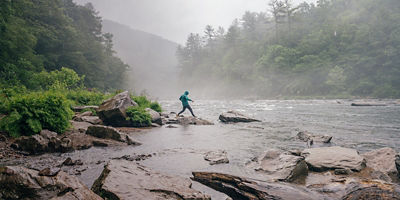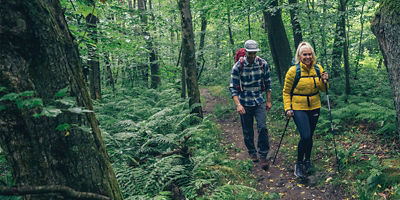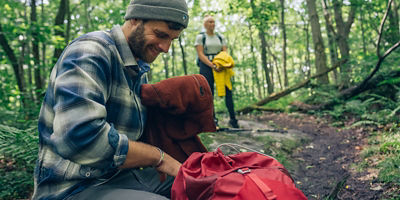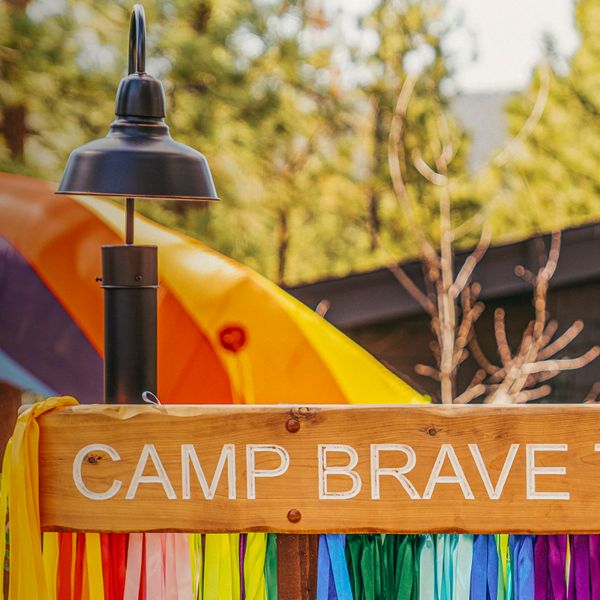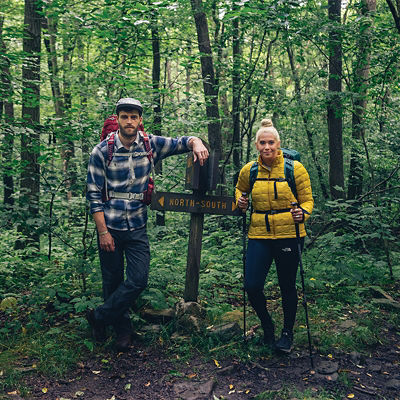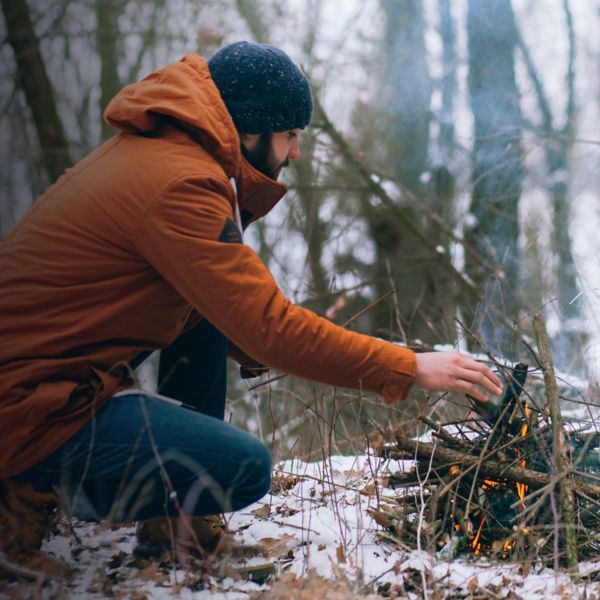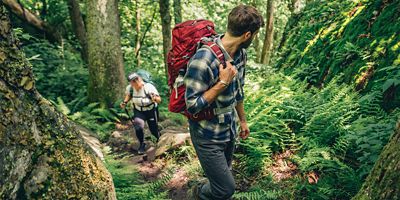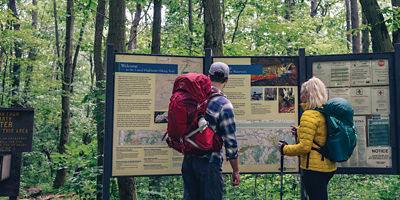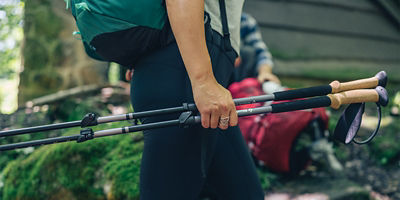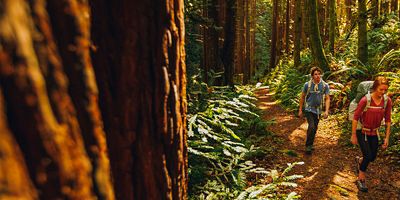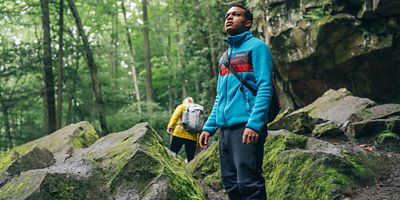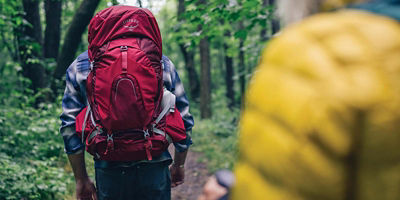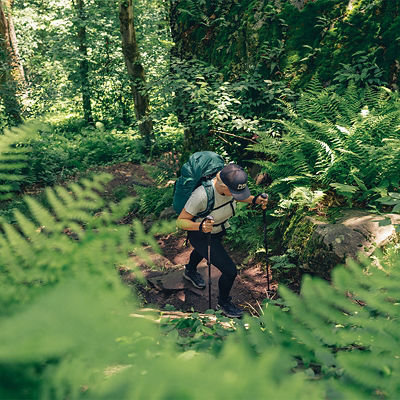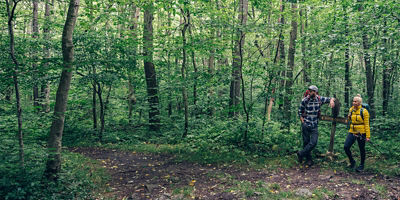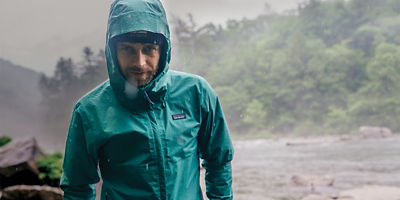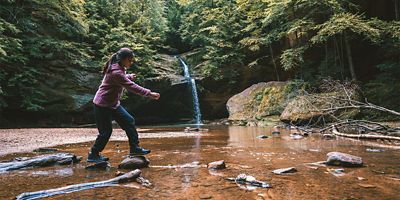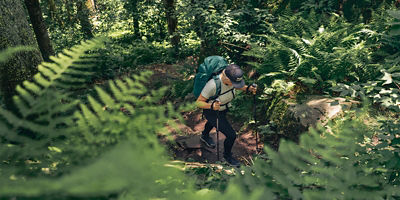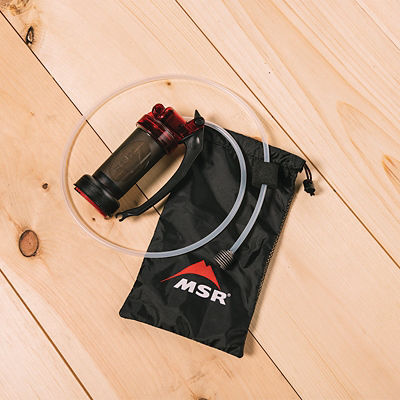
Exploring the wide-open terrain above treeline is one of hiking’s greatest joys. Whether you’re seeking to summit a peak, see alpine wildflowers in full bloom, or simply earn an incredible view, heading into the high mountain elevations brings plentiful rewards. It also carries its own set of risks, including steep terrain, lower oxygen levels, and severe weather. If alpine travel is totally new to you, consider taking a course or hiking with a guide or experienced partners to start. And do your homework, starting with the following essential skills for high-mountain hiking.
In this article, you’ll learn how to:
- Scramble up steep slopes safely
- Choose an objective
- Find your way above treeline
- Prevent and treat acute mountain sickness (AMS)
- Avoid lightning
- Prepare for more technical routes
Scramble Safely
The higher you go, the steeper the terrain tends to get. Mountaineers classify peaks on a Class-1 to Class-5 scale:
Class 1: Straightforward hiking. No need to use your hands.
Class 2: Hiking with sections of pretty steep terrain. You might use a hand here and there.
Class 3: Light scrambling. You might carry a rope just in case, but fatal falls are unlikely.
Class 4: Scrambling on exposed terrain where falls could be deadly. Ropes recommended.
Class 5: Technical, vertical climbing with extended no-fall zones. Class 5 climbs are generally rated on a scale from 5.0 to 5.15. Ropes and rock climbing know-how are definitely advised.
Looking to explore into Class-3 or Class-4 territory? Follow this guidance.
- In alpine terrain, scrambling usually begins when you hit fields of talus (larger rocks) and scree (smaller rocks) nearing the summits of mountains. Don’t rush as you move through these areas. Instead, study the landscape to find the best path to your goal and move carefully along it, revising your plan as the conditions require.
- Maintain three strong points of contact with the slope at all times (two feet and one hand, or two hands and one foot). Test every rock for stability before you grab or step on it; don’t commit your full weight until you’re sure it won’t move.
- Don’t travel directly above or below someone else, in case someone dislodges a rock.
- Descending is harder than ascending, and you’re usually tired by the time you start heading down. Be extra careful on the return trip. When the slope is steep, face the rock and downclimb for more stability.
- Plan your descent route carefully. It’s easy to accidentally get cliffed out, or stuck on a ledge that you can drop down to but not climb back up from.
Note: Most experts recommend roping up for fourth-class terrain (and even some third-class terrain), especially if you’re new to scrambling or aren’t intimately familiar with the route. Climbing helmets are generally recommended for all routes fourth-class and harder. You should also wear a helmet for any scrambling that takes place in a significant rockfall zone.
Choose an Objective
When you start shopping around for routes, you may notice that many mountaineering-type objectives come with two ratings: a “climbing class” and a “commitment grade.”
The class rating (see above) is a measure of the hardest climbing you’ll encounter on a route. So, a “Class-4 route” might involve a full mile of fourth-class climbing—or it might just indicate a single fourth-class move. (Always read a detailed route description before committing to a route.)
The commitment grade (see below) indicates how long an average party takes to complete the technical, or “climby,” part of the route. (This doesn’t include the walk to get to the base of your objective.) Most scrambles are Grade III or lower.
Grade I: The technical part of the route takes less than half a day
Grade II: The technical section takes a half day
Grade III: The technical section takes most of a day
Grade IV: The route involves at least a full day of serious technical climbing
Grade V-VII: The route takes multiple days to complete
If you’re not accustomed to steep, rocky terrain, a “Grade I, Class-3” route is a relatively low-risk place to start. If you have a lot of technical rock climbing experience, you may want to try some fourth-class scrambling, or a longer Class-3 route.


